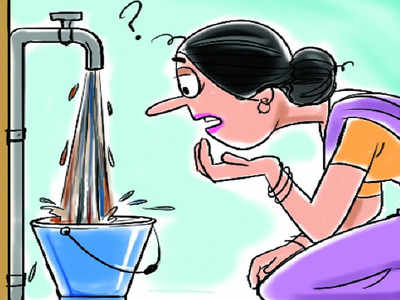The Financial Express 24.11.2010
24×7 water for allRanesh Nair, Isher J Ahluwalia
In a long overdue exercise setting standards for service delivery for core urban services, the Ministry of Urban Development, Government of India, has recommended 24×7 water as the norm for all cities and towns of India in a report brought out in 2008. This reflects the recognition that continuous water supply is vital for both health and sanitation, and that leapfrogging in this respect is a desirable and feasible option.
For Nagpur, it all started with the Sukhantkar Committee, which was set up by the Government of Maharashtra in 2000 to review the efficiency…of water supply in the towns and cities of Maharashtra. The Committee recommended water audit for all cities of Maharashtra and the state government offered to fund 75% of the cost of studies to measure the gap between the cities’ water input and their billing for water ostensibly consumed by the consumers.
In 2003, the Nagpur Municipal Corporation (NMC) tried to augment the supply of bulk water to the city by building water treatment facilities, water mains, and elevated service reservoirs. This increased the volume of water input to the city by 32%, but sales of water showed no increase. It turned out that leakages/losses in the distribution network offset any gains from augmentation.
Nagpur was the first city to conduct the water audit, which revealed water losses to the extent of 52%. The transportation loss from the bulk source was 30%. The distribution network of approximately 2,100 km of pipes in…
A number of initiatives were taken up by NMC to improve the efficiency of operations in water treatment plants via the water audit and via the upgrading of pumping stations through the energy audit, and to plug the leakages in the distribution network in the city, which has resulted in increasing Nagpur’s water system efficiency from 32% in 2005 to 41% in 2010.
NMC has put in place a series of projects to upgrade the augmentation system. Canals that carried raw water from the first source at Pench 48 km outside of the city are being replaced by pipes and the second source at Kanhan is being augmented (both under JNNURM), bringing down the cost of raw water by 75%.
Production capacity is expected to increase…
to 765 mld, which should meet the additional demand for water up to 2021. Not only does this augment Nagpur’s water supply by 235 mld with no additional burden on natural resources, but the NMC/Government was able to save about Rs 300 crore that would have been spent on developing a new water source.
A major initiative of the Corporation was the pilot 24×7 water supply project, which has attracted much attention. A performance-based management contract of the project in the demo zone was awarded to Veolia Water at a cost of Rs 27 crore (including rehabilitation). No capital investment was made by the private party for the pilot project. Of the distribution network, 70% of the assets were retained and 30% replaced. All legal connections were metered, while slum connections were not metered.
Close to 10,000 connections now have access to 24×7 water supply. Another 5,000 connections will be…
activated by December 2010. Water pressure has increased ranging from three to fivefold, as a result of which households have stopped using booster pumps, which saves energy. A customer care centre has been set up for generating bills, receiving payments and attending to complaints 24×7. Non-revenue water in the demo zone has come down from 50% to 32%.
To recover costs, tariffs had to be raised. But customers were used to paying less because of faulty meters and/or theft. Moreover, tariffs had not been raised for nine years. Also, at the time of the switchover, bills were delayed and customers received their bills for six months at one go. Communicating the need for a tariff increase was a challenge, and there seems to have been no strategy in place to do this. For example, the minimum water tariff was to increase from Rs 3 to Rs 8, and a case…
was not properly made to the customer. Timing was also bad because of the elections in May and October, 2009. Protests were organised by NGOs against the tariff increase.
Not surprisingly, the general body of the NMC decided to reduce the water tariff. The fact remains that water tariff in Nagpur is one of the lowest in the region. For example, NMC’s minimum tariff of Rs 5 per unit is much lower than the Rs 11 per unit charged by Maharashtra Jeevan Pradhikaran (MJP), the apex water supply department of the state government to areas in and around Nagpur. As NMC Commissioner Sanjeev Jaiswal put it: “The downward revision of the tariff increase was a necessity because of the opposition raised by civil society but in the years to come, the real challenge would be to increase this tariff again to make the operation economically viable.”
Despite the initial setbacks to…
In November, 2010, NMC awarded the contract to Veolia Water (India) Pvt Ltd and Vishwaraj Environment Pvt Ltd at a price of water Rs 7.90 per thousand litre sold and received from the customer. The private operator will bring 30% of the sanctioned capital cost and any cost escalations that may arise. As Dinesh Rathi, the consultant to NMC on the project explained: �This project will provide much-needed professional approach to urban water management.�
The progress made by Nagpur in the ambitious water initiative will be followed closely by the entire nation, as success on this will have a positive demonstration effect for many other cities wanting to do the same.
This is the 11th in a monthly series on urban infrastructure postcardsofchange@expressindia.com…

